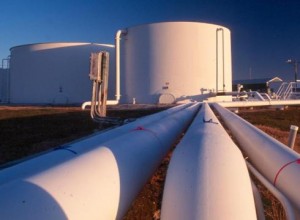 Natural gas returned to losses on Friday following yesterdays inventory data-driven rally as forecasts for cooler conditions across key US consuming regions fueled expectations for lower cooling demand.
Natural gas returned to losses on Friday following yesterdays inventory data-driven rally as forecasts for cooler conditions across key US consuming regions fueled expectations for lower cooling demand.
Natural gas for delivery in September traded 1.20% lower at $2.722 per million British thermal units at 08:01 GMT, shifting in a daily range of $2.760-$2.717. The contract rose 1.4% on Thursday following a 0.4% gain the prior day, but is down 2.8% for the week so far.
The Energy Information Administration printed a bullish inventory number yesterday due to maintenance-related tighter imports from Canada, while hot temperatures across Texas led to a draw of 1 bcf in the producing region during the tracked period. US natural gas inventories rose by 53 billion cubic feet in the week ended August 14th, below analysts median estimate of 58 bcf and the five-year average inventory build of 54 bcf. Supplies rose by 86 bcf a year earlier.
Total gas held in US storage hubs amounted to 3.030 trillion cubic feet, slightly narrowing a deficit to the five-year average of 2.950 trillion to 2.7% from 2.8% a week earlier. Supplies were also 19.2% above the year-ago stockpiles of 2.542 trillion cubic feet.
Despite the bullish report, however, bearish sentiment was quick to return to the market on Friday, driven by a mixed weather outlook. National natural gas demand will be moderate compared to normal for one more day today, NatGasWeather.com said, as the recent unseasonably strong weather system that brought showers, thunderstorms and cooler-than-normal temperatures across the north-central US this week finally exits the country. This will be followed by a warm-up over the southern and eastern US, beefing up natural gas demand back to high through the weekend.
Next week’s inventory report will likely bring another near-normal inventory build as very warm to hot temperatures across the US the past weekend and early this week offset the cooler system in question, although the number could trend a bit higher. Supplies are projected to have risen by about 55 bcf during the week ended August 21st, below the five-year average increase of 61 bcf and the year-ago one of 77 bcf.
However, as we have been saying before, another weather system with cooler conditions will spin up over the northern Plains late this weekend and will track over the Midwest and Northeast through the middle of next week. This will once again curb national natural gas demand to moderate despite highs in the 90s and 100s that will establish over the South, Texas and Great Plains, but another shift will be quick to follow. As the week progresses, a strong Pacific weather system will push inland, bringing cooler conditions over the West, but also forcing the ridge of high pressure over the central and eastern US, resulting in a regional warm-up that could last for some time.
Temperatures
According to AccuWeather.com, highs in New York will be in the low-mid 80s for the rest of the month, compared to the usual 80-82, while Chicago will max out in the upper 70s and low 80s through August 26th, before warming up slightly over the following six days.
Down South, the high in Houston today will be 92 degrees, matching the seasonal, and maximum temperatures will remain in the low-mid 90s for the rest of the month. To the West, Sacramento will peak at 88-90 degrees through August 25th, compared to the average 90-91, with highs set to hover in the mid 80s over the following two weeks.
Pivot points
According to Binary Tribune’s daily analysis, September natural gas futures’ central pivot point stands at $2.746. In case the contract penetrates the first resistance level at $2.797 per million British thermal units, it will encounter next resistance at $2.840. If breached, upside movement may attempt to advance to $2.891 per mBtu.
If the energy source drops below its S1 level at $2.703 per mBtu, it will next see support at $2.652. In case the second key support zone is breached, the power-station fuel’s downward movement may extend to $2.609 per mBtu.
In weekly terms, the central pivot point is at $2.839. The three key resistance levels are as follows: R1 – $2.896, R2 – $2.992, R3 – $3.049. The three key support levels are: S1 – $2.743, S2 – $2.686, S3 – $2.590.





